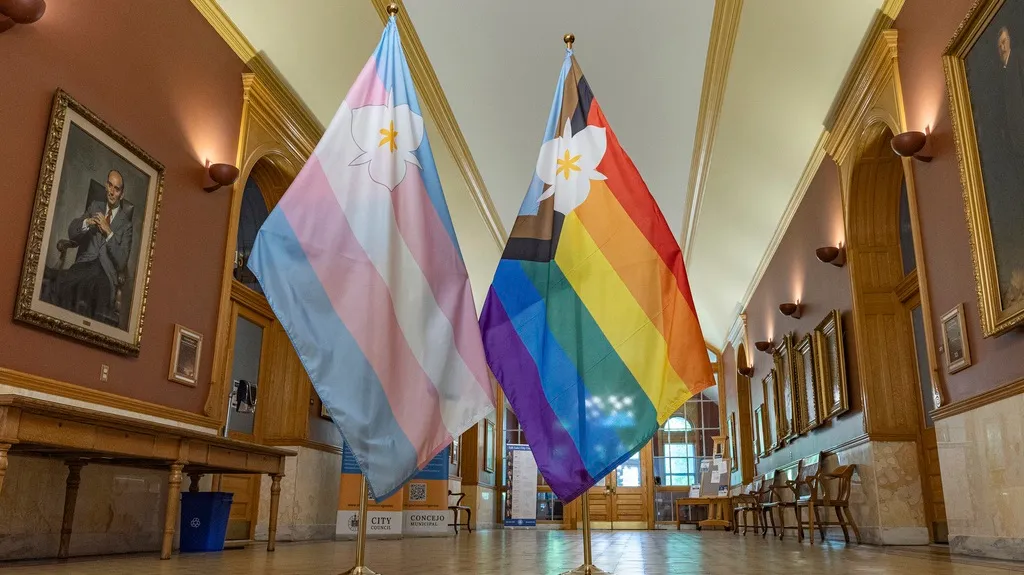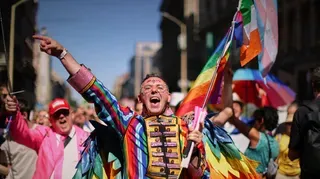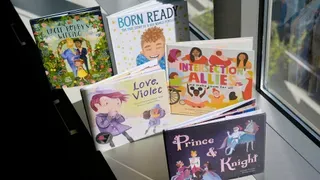August 21, 2013
LGBT Teen Homelessness in South Florida, Part 1
Kilian Melloy READ TIME: 6 MIN.
Jamesly Louis didn't know what he was going to do, but bottled up with frustration, anger and sadness, he knew if he went home after school the way he was feeling, he was "going to do something stupid."
He knew that his assigned counselor didn't care. The other students who bullied him didn't care. The teachers who pretended over and over again that it was a harmless scuffle between boys didn't care. Somehow, the gay 16-year-old boy found his way to his TRUST counselor at Miami Beach Senior high School. Normally there to help students dealing with drugs, she went into action and by midnight that evening, Louis called Covenant House in Fort Lauderdale his new home.
"I wrote a letter and gave it to the TRUST counselor and then she managed to talk to me," Louis remembers. "All I wanted was someone, some type of connection to make me feel like I was not alone. I really felt that deep down, well maybe I don't belong here; if I'm the only one that's like that, then why am I here?"
Louis, now 22, lived in the shelter for homeless teens for two months when he was 16 years old after he couldn't handle living in a home where he was ignored, his homosexuality an unspoken issue, and being bullied at school. Unfortunately, Louis was a part of up to 40 percent of homeless youth who identify as LGBT, even though they represent only about 10 percent of the population, according to the National Coalition for the Homeless.
Data has always shown that LGBT youth have more worries than their straight counterparts. According to a study by the Human Rights Campaign, of more than 10,000 LGBT youth ages 13 to 17 who were surveyed, their top three concerns were their non-accepting families, bullying in school, and fear of being outed. Their straight counterparts said it was class/exams/grades, college/their future career, and financial pressures.
"School is just not even an issue if you're trying to survive," Mandi Hawke said. "You shouldn't be concerned about who you are and being accepted and fitting in and bullying and being afraid."
Hawke serves as the director of youth services at SunServe in Fort Lauderdale, where she runs a teen-friendly space where participants are free to be themselves and voice their concerns. However, it's not unheard of to receive multiple calls a week from homeless gay teens who were kicked out of their homes or ran away. Unfortunately, SunServe currently does not have a full-fledged homeless program and can only refer homeless teens to Covenant House, where Louis went, or give them provisions.
Louis was born and raised in Haiti, a country highly influenced by its Catholic roots, until he moved to the United States at 14 with his mother and four brothers when she married a Haitian man in South Florida. He never discussed being gay with his family, although he knows they knew. Back home, fellow congregants told church leaders that they feared he was gay and priests had tried to "pray the gay away." But from a young age, Louis knew it was a part of him, even if he didn't know what being gay meant.
When his family moved to Florida, life got tougher as his family life became a place of emotional abuse by his stepfather, who they discovered had never filed for their visas. The five boys were shuffled around to foster families.
"At that time I was 14 or 15. I really needed my parents for a lot of things and I [didn't have them], so that was emotional for me, it was what really drained me," Louis said.
Carla Silva, the executive director of the Alliance for GLBTQ Youth, a collaboration of organizations that work to nurture LGBT youth, including services, counseling and advocacy.
"Of all the young people that engage in our services, on average, 20 percent of them tell us that they're not safe at home, that they need a safe place to live, or that they have been thrown out or run away - and that is youth that comes for service for any reason whatsoever," Silva explained.
However, for many organizations such as SunServe and The Alliance, the biggest problem they are facing is a government who is too afraid to take on the issue of LGBT homelessness. Due to anti-discrimination laws, organizations who receive funding from the Department of Housing and Urban Development are not allowed to ask for one's sexual orientation at intake. Plus, agencies wanting to change their intake forms would have to undergo a massive administration and legislative overhaul for permission.
While HUD's ban may be well meaning to prevent discrimination, Silva believes it's another situation of Don't Ask, Don't Tell.
"It's short sighted. They really don't understand that without having this information, we don't have the full scope of the problem," Silva said.
This past school year, Silva spoke with a staff member at Miami-Dade Public Schools who said that there were 270 students who were unaccompanied - not living with a parent or guardian, nor in the foster system. When asked how many were LGBT, the staffer said "maybe" four or six, but she wasn't sure.
On the other hand, the teens themselves may not be honest when asked their sexual orientation or identity - so many have heard horror stories of homophobic staffers or religious organizations that won't help LGBT homeless youth that they've been taught to lie.
"They have very little trust in the system at play, and with good reason. This has been their experience - they're not manifesting this," Silva said.
To add to the problem, even if agencies were aware of their clients' sexual orientation, many don't know what to do with that organization. Silva and Hawke are both actively involved in training staffers at different shelters and organizations on how to deal with LGBT people.
"There's either people who don't want anything to do with it, period, and then there's people who are very well meaning but they just don't know how to ask the question," Hawke said.
In one case, a lesbian teen was accidentally placed in a home with a homophobic foster parent who told her she wouldn't have taken her if she knew she was gay. In shelters, transgender clients are often placed by their assigned gender - even if a biological man comes in dressed as a woman, has a female name, and identifies as a woman, she would be placed with the men. While staff can be trained, it's difficult to protect someone from other clients who may be homophobic and violent.
Silva remembers a case of a transgender girl at a Miami teen shelter who kept returning to the shelter to the frustration of staff. Not only was she housed with boys - where she didn't feel safe - but she also was only given male clothing and was referred to as a male.
"She definitely felt like her identity was under attack on a regular basis, but also her parents would say, 'Well as long as she dressed like a boy... I would take her home,'" Silva said.
Staff encouraged her to dress like a boy and considered her to be defiant when she wouldn't do so. Every time her father picked her up, she was kicked out of the car when she refused to act like a boy. Finally, she left Miami and Silva does not know what happened to her - a heartbreaking part of being in the field.
When Hawke refers teens to other organizations, due to privacy issues she cannot follow up on the condition of the teen. It's also nearly impossible for the teen to update her since many end up borrowing phones from friends or businesses. She referred one teen to Covenant House who had moved to Florida to escape his homophobic home only to wind up staying with a group of supposed friends who told him he couldn't stay with them unless he had sex with all of them.
"It's awful," Hawke says about not knowing what happens to the teens she tries to help. "I hope and I send all the good energy that they have made the connection necessary... most often I don't hear what actually happened, so that is what really fuels us to have our own program that way I will know they got the care needed."
For Louis, he did get the care that he needed from his school's TRUST counselor. She called Pridelines Youth Services, who referred the then-16-year-old boy to Covenant House. He went to his empty home, threw everything he needed in a bag, and made the two-hour bus ride from Miami to Fort Lauderdale. For much of the ride, it was just him and the bus driver, watching city after city pass, miles separating him from the home he couldn't stand and a strange place he could only have faith would help him. By midnight he arrived at the shelter to go through paperwork and start a new life.
This is the first of a two-part series by South Florida Gay News on LGBT teen homelessness in South Florida.
Kilian Melloy serves as EDGE Media Network's Associate Arts Editor and Staff Contributor. His professional memberships include the National Lesbian & Gay Journalists Association, the Boston Online Film Critics Association, The Gay and Lesbian Entertainment Critics Association, and the Boston Theater Critics Association's Elliot Norton Awards Committee.




